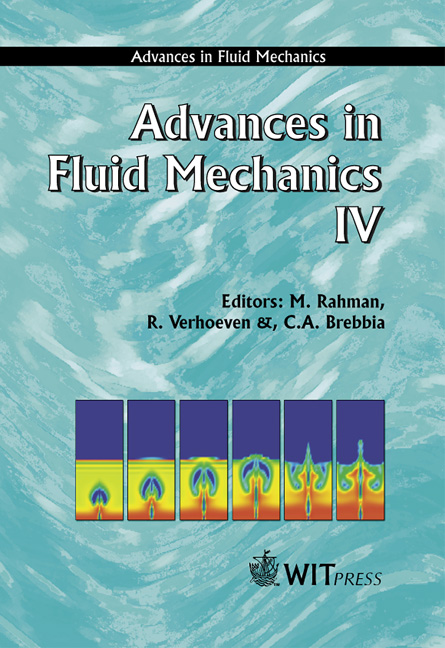Heat Transfer In Turbulent Impinging Jets With A Nonlinear K-e Model
Price
Free (open access)
Transaction
Volume
36
Pages
10
Published
2002
Size
489 kb
Paper DOI
10.2495/AFM020601
Copyright
WIT Press
Author(s)
B. Merci, C. De Langhe, E. Dick & J. Vierendeels
Abstract
This paper contains a numerical study of the convective heat transfer of a turbulent jet, impinging onto a flat plate. The low-Reynolds standard k – E model (Yang [l]) (further 'YS'), dramatically over predicts the heat transfer at the stagnation point (e.g. Behnia [2,3]). A non-linear eddy-viscosity model, based on (Merci [4]), is presented, in which there is no over prediction. The model differs from the YS model in two aspects: the constitutive law, relating the turbulent stresses to the local mean velocity gradients, is non-linear, and the transport equation for E is altered (and physically more correct). Both the E transport equation and the constitutive law are important to improve the results. For the turbulent heat flux, the linear gradient hypothesis is used. Results are presented for a constant turbulent Prandtl number and for a Prandtl number which is a function of the local eddy viscosity. Differences between these results are small. Results are discussed for turbulent jets with variable distance between the jet nozzle exit and the flat plate. The local Nusselt number profiles on the flat plate are compared to experimental data (Baughn [5,6], Cooper [7], Craft [S]). The flow field is studied in terms of mean velocities and turbulent stresses. Globally, the presented non-linear eddy-viscosity model yields accurate flow field predictions. The heat transfer at the stagnation point is well predicted, and the shape of the profiles of the local Nusselt number is improved, though still not in perfect agreement with the experimental data.
Keywords





